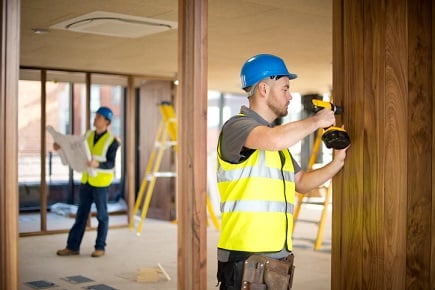The benefits and challenges of the fix-and-flip investment market

Deciding on whether or not to invest in fix-and-flip properties can be tricky, as significant benefits and challenges can influence an investor’s decision. The determinants of a good investment in fix-and-flips include the price you pay for the purchase of the property and the cost of the renovation. An investor must also be aware of the general health of the economy and the location of the property, according to a blog post by Allen Shayanfekr at Sharestates.
Understanding how the current economic environment impacts the market can help you get the most out of your investments. If the economy is bad, people resist purchasing homes, often opting for rentals instead. If the economy is too good, the competition for fix-and-flip increases, diminishing profits. If a property is in a bad neighborhood, it will be hard to sell while the cost to renovate could outweigh the investment in the property, risking the loss of some or all of the profits.
To better recognize the potential of a fix-and-flip, Shayanfekr establishes three metrics for ideal conditions when deciding whether or not to move forward on this type of investment property.
The availability and changes in housing inventory can significantly influence decision-making. Low housing inventory is perfect for house flippers, as home buyers have fewer good options, especially with new homes, creating a higher demand for rehabilitated properties. While some have seen higher housing inventory levels in 2019, others see inventory still in decline. It depends on the location. Either way, keep an eye on inventory levels in 2019.
Changes in the rate of home purchases also have a strong impact on investment decisions. The market is seeing an influx in homebuying, specifically with first-time home buyers. Though millennials have waited longer than any previous generation to buy homes, we are seeing millennials now buying or planning to buy homes. This upward trend is a good sign that the market will remain steady.
Fluctuation in the cost of homebuying puts additional pressure on the outcome for investors. Home prices rose 5.6% from January 2018 to January 2019, according to the Federal Housing Finance Agency. The increase in the cost of purchasing homes creates a challenge for many families, often displacing families with few options in future home buying.
While these metrics may not look great, Shayanfekr recognizes the value of the location as a key to finding a good investment property. CNBC Home Hacks writer Shawn M. Carter establishes the following markets as the top 10 states to invest in:
- Tennessee
- Pennsylvania
- New Jersey
- Louisiana
- Colorado
- Maryland
- Virginia
- Florida
- Illinois
- Kentucky
These states have an average ROI of 83-155% and an average flip of 180 days, making them ideal markets for fix-and-flip investments.
With the market in constant flux, it’s important to keep in mind that just because one market goes south, it doesn’t mean that another location or market can’t offer good opportunities. If fix-and-flip isn’t looking like a sound investment, rental properties are another area that is growing. Whichever direction you choose, remember to asset class diversification is key to building a profitable investment portfolio.



